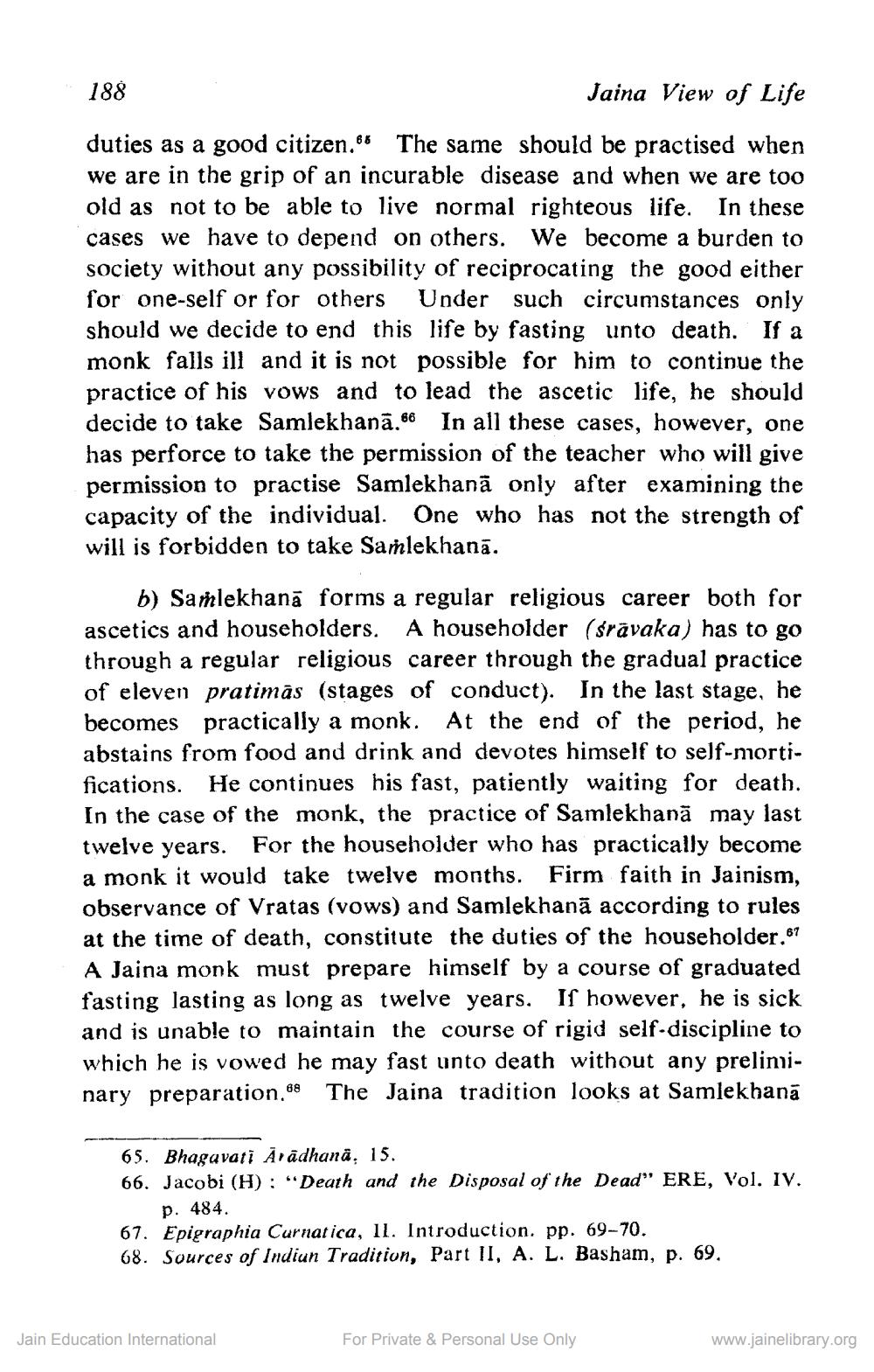________________
188
Jaina View of Life
duties as a good citizen.86 The same should be practised when we are in the grip of an incurable disease and when we are too old as not to be able to live normal righteous life. In these cases we have to depend on others. We become a burden to society without any possibility of reciprocating the good either for one-self or for others Under such circumstances only should we decide to end this life by fasting unto death. If a monk falls ill and it is not possible for him to continue the practice of his vows and to lead the ascetic life, he should decide to take Samlekhanā.66 In all these cases, however, one has perforce to take the permission of the teacher who will give permission to practise Samlekhanā only after examining the capacity of the individual. One who has not the strength of will is forbidden to take Samlekhanā.
b) Samlekhanā forms a regular religious career both for ascetics and householders. A householder (sravaka) has to go through a regular religious career through the gradual practice of eleven pratimās (stages of conduct). In the last stage, he becomes practically a monk. At the end of the period, he abstains from food and drink and devotes himself to self-mortifications. He continues his fast, patiently waiting for death. In the case of the monk, the practice of Samlekhanā may last twelve years. For the householder who has practically become a monk it would take twelve months. Firm faith in Jainism, observance of Vratas (vows) and Samlekhanā according to rules at the time of death, constitute the duties of the householder.67 A Jaina monk must prepare himself by a course of graduated fasting lasting as long as twelve years. If however, he is sick and is unable to maintain the course of rigid self-discipline to which he is vowed he may fast unto death without any preliminary preparation.98 The Jaina tradition looks at Samlekhana
65. Bhagavati Arādhana, 15. 66. Jacobi (H): "Death and the Disposal of the Dead" ERE, Vol. IV.
p. 484. 67. Epigraphia Curnatica, 11. Introduction. pp. 69-70. 68. Sources of Indiun Tradition, Part II, A. L. Basham, p. 69.
Jain Education International
For Private & Personal Use Only
www.jainelibrary.org




